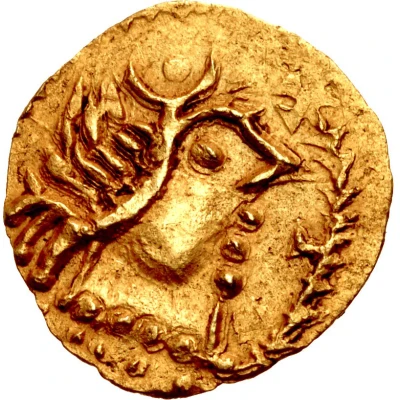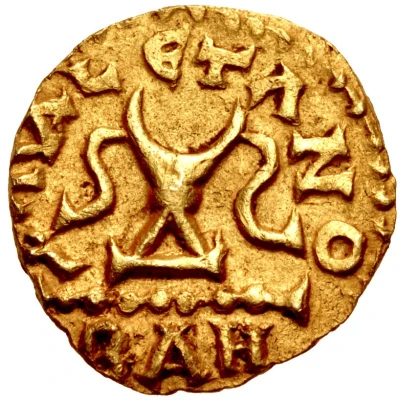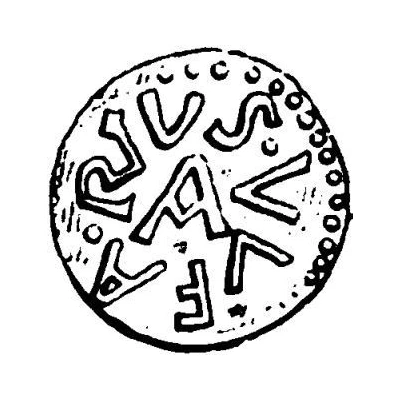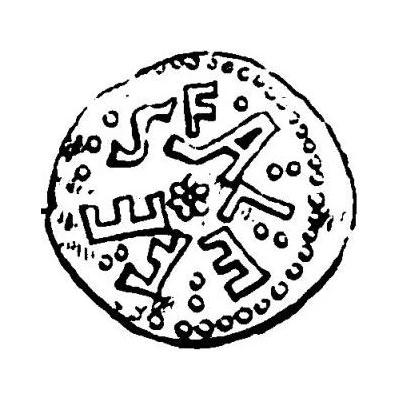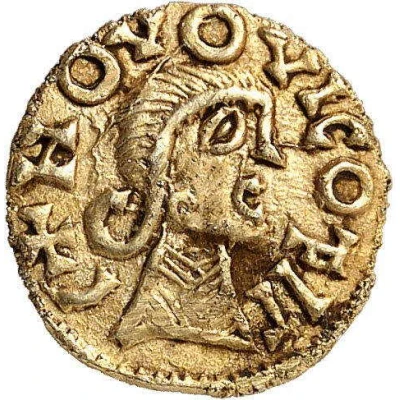
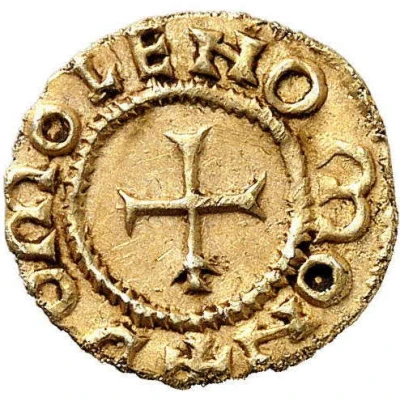

© MDC Monaco Monnaies de Collection sarl
Tremissis - Moneyer Domoleno Neuvic
| Gold | 1.21 g | 13.5 mm |
| Location | Kingdom of Aquitaine (Frankish Kingdoms) |
|---|---|
| Moneyer | Domoleno |
| Type | Standard circulation coin |
| Years | 650-660 |
| Value | 1 Tremissis (⅓) |
| Currency | Tremissis (476-670) |
| Composition | Gold |
| Weight | 1.21 g |
| Diameter | 13.5 mm |
| Shape | Round (irregular) |
| Technique | Hammered |
| Orientation | Variable alignment ↺ |
| Demonetized | Yes |
| Updated | 2024-10-09 |
| Numista | N#338378 |
|---|---|
| Rarity index | 100% |
Reverse
In a beaded circle, a cross placed on a globule.
Script: Latin
Lettering: ✠ DOMOLENO MON
Translation: Moneyer Domoleno.
Comment
Several localities correspond to NOVO VICO: Neuvic d'Ussel (Corrèze), Neuvy-en-Champagne (Sarthe), Neuvy-Bouin (Deux-Sèvres) or Neuvy-le-Roi (Indre-et-Loire). A Domoleno moneyer is known in various other places including Palaiseau, Vic-en-Ponthieu or Mauriac (Cantal) but had not been found for Novo Vico. The particular hair, long and ending in a volute, is however characteristic of the workshops of Haute-Vienne, Creuse or Dordogne, hence the attribution to Neuvic d'Ussel in Corrèze.Interesting fact
The Tremissis - Moneyer Domoleno (Neuvic) coin, made of gold and weighing 1.21g, is an interesting piece of history because it was used during a time of great change in the Byzantine Empire. The coin was minted during the reign of Emperor Constans II (641-668 AD), who made significant reforms to the empire's monetary system. The Tremissis was one of the new coin denominations introduced during this time, and it was used to replace the older Solidus coin. This fact highlights the coin's significance in the history of currency and the impact it had on trade and commerce during that period.
